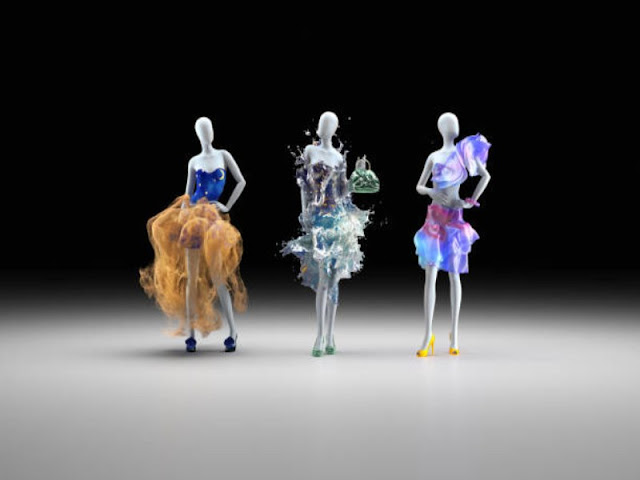Featured
- Get link
- X
- Other Apps
The Rise of Virtual Fashion Shows

A Digital Runway Revolution
Introduction:
In the ever-evolving landscape of the fashion industry, the
traditional runway show has undergone a revolutionary transformation thanks to
digital platforms. The advent of virtual fashion shows has not only disrupted
the conventional norms of presenting collections but has also opened up new
avenues for designers to engage with a global audience in immersive and
interactive ways. This shift has been accelerated by technological
advancements, the impact of the COVID-19 pandemic, and a growing demand for sustainability
in the fashion world.
- Breaking
Geographical Barriers:
One of the most significant advantages of virtual fashion
shows is the ability to break free from geographical constraints. Designers are
no longer bound to a specific location, allowing them to reach a global
audience without the limitations of physical space. This democratization of
fashion shows has provided emerging talents with a platform to showcase their
work alongside established designers, fostering inclusivity in an industry that
has historically been exclusive.
- Immersive
Experiences Through Technology:
Digital platforms have introduced cutting-edge technologies
to create immersive experiences for viewers. Augmented reality (AR) and virtual
reality (VR) have become integral tools in transforming a simple fashion
presentation into a multidimensional, interactive event. Viewers can virtually
explore collections, experience the ambiance of a runway show, and even
customize their perspectives, providing a level of engagement that goes beyond
the capabilities of traditional shows.
- Social
Media Amplification:
Social media platforms have played a pivotal role in the
rise of virtual fashion shows. Designers can leverage the power of social media
to amplify their shows, reaching a global audience instantaneously. Live
streaming on platforms like Instagram and YouTube allows for real-time
interaction, enabling designers to connect with their audience and receive
immediate feedback. This direct engagement creates a sense of community,
turning the fashion show into a shared experience rather than a passive observation.
- Sustainability
and Reduced Environmental Impact:
The fashion industry has faced increasing scrutiny for its
environmental footprint, with traditional fashion shows contributing to the
carbon footprint through travel, set construction, and waste. Virtual fashion
shows offer a sustainable alternative by significantly reducing the need for
physical infrastructure. Designers can present their collections without the
environmental impact associated with traditional runway shows, aligning with
the growing demand for eco-friendly practices in the industry.
- Enhanced
Creativity and Artistic Expression:
The digital realm allows designers to push the boundaries of
creativity and artistic expression. Virtual fashion shows are not confined to
the limitations of physical spaces, enabling designers to experiment with
unconventional concepts and explore fantastical themes. The use of digital
effects, CGI (computer-generated imagery), and other innovative techniques adds
a layer of storytelling to the presentation, transcending the traditional
runway format.
- Adapting
to the Post-COVID Landscape:
The COVID-19 pandemic accelerated the adoption of virtual
fashion shows as a response to the restrictions on large gatherings and travel.
Designers quickly embraced digital platforms to ensure the continuity of their
creative endeavors. While the pandemic acted as a catalyst for this shift, the
benefits of virtual fashion shows have made them a permanent fixture in the
fashion calendar, allowing designers to reach wider audiences regardless of
external circumstances.
- New
Business Models and Consumer Engagement:
Virtual fashion shows have prompted a reevaluation of
traditional business models in the fashion industry. The see-now-buy-now model,
where collections are made immediately available for purchase after the virtual
show, has gained popularity. This direct-to-consumer approach enhances consumer
engagement and reduces the time lag between showcasing a collection and making
it accessible to the public. It also addresses the evolving demands of a
digitally savvy and impatient consumer base.
Conclusion:
The rise of virtual fashion shows marks a transformative era
in the fashion industry, where digital platforms have become the new runways.
Breaking geographical barriers, offering immersive experiences, leveraging
social media, and embracing sustainability, virtual fashion shows have become a
dynamic and inclusive way for designers to showcase their creations. As
technology continues to evolve, the intersection of fashion and the digital
realm will undoubtedly lead to even more innovative and captivating experiences,
shaping the future of the fashion show as we know it.
- Get link
- X
- Other Apps
Popular Posts
Which Types Of Workouts And Activities Are Most Beneficial For Women?
- Get link
- X
- Other Apps
